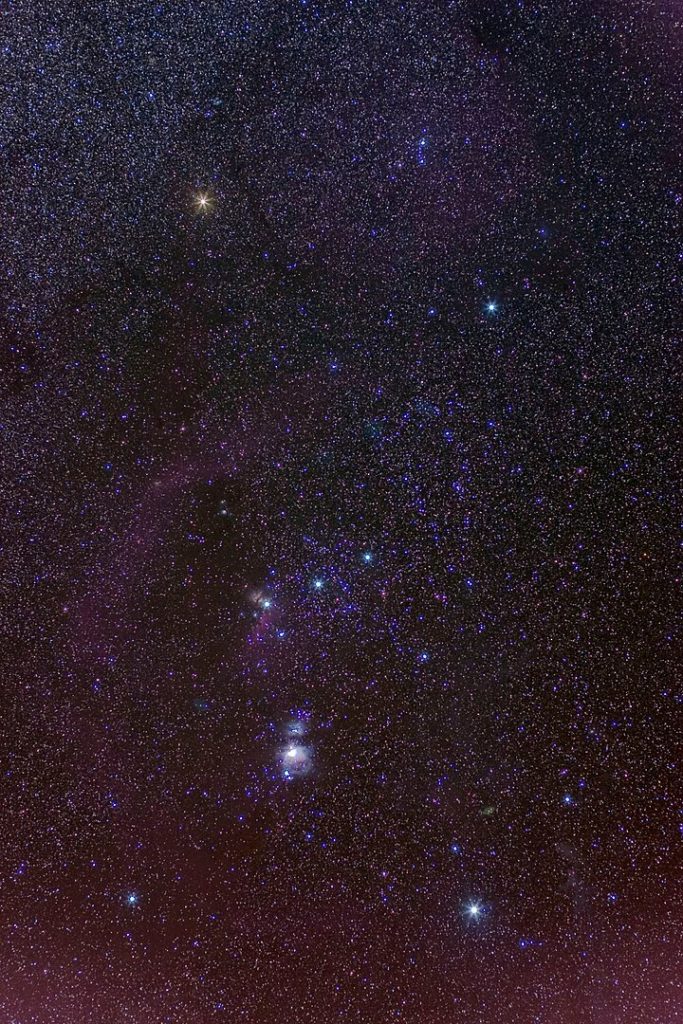
What’s up?
October Stargazing Tips For World Space Week 2020
Article by Eleanor King-Turner – 2.5 minute read
Image by Joshua Earle on Unsplash
Find out what’s in our night skies throughout October, and how to see them with the naked eye! Wrap up warm, head outside and explore the heavens this month, as part of World Space Week (4th-10th October) and beyond.
If you’ve ever looked up and wondered how on Earth (or actually, not on Earth) to make sense of all the white dots, you’re not alone. Is it a planet? Is it a satellite? Or just a flight returning from Malaga? This article will give you a heads-up on what to look out for and when, plus tips on how to look in the right place!
Spot a Satellite
The World Space Week theme this year is “Satellites improve life”, so it’s only fitting that we should try to spot them while stargazing! The brightest is the International Space Station (ISS), a huge, orbiting laboratory, the largest artificial object in space. You can spot it most nights by checking this site, and it’s easiest when the max height (the angle above the horizon) is over 40 degrees or so. To spot other satellites, try this site. In both cases, be sure to change your location if you aren’t in Exeter!
Mars, Saturn and Jupiter – all month
Planets can be seen in the night sky using only the naked eye, in fact they’re often easier to spot than particular stars due to their colour. Throughout October, you’ll be able to see Mars, Saturn and Jupiter without any equipment.
Mars reaches its closest point to Earth on the 13th October – look for a bright red spot coming up from the horizon in the East at around 19:30, getting brighter and easier to spot as the night goes on. Pro tip: if you have a telescope, try looking for some surface features such as the polar ice cap! Mars can also be spotted almost next to the Moon on 3rd October.
Use this sky chart to find out when and where to see Jupiter and Saturn throughout the month, particularly on the 22nd October at 18:30 BST looking South.
Full moon – 1st and 31st October
The month is topped and tailed by a full moon this year, making the one on the 31st a ‘blue moon’ (yes, that is a real term!). Sadly, this doesn’t mean the moon will actually appear blue. There will be a ‘new moon’ on the 16th October – the side of the moon facing the Earth will be entirely in shadow, so to us it appears dark/invisible.
Meteor Showers
The Orionid meteor showers, coming from the constellation Orion, will be particularly bright between midnight and dawn on the night of 21st-22nd October, with predictions of up to 25 meteors per hour! The constellation will be visible from around 22:15 BST in the East towards the horizon, however meteors should be visible across the sky. The shower will peak late night/early morning so bring a chair and a hot drink if you want to make the most of it!
Orion can be easily spotted by looking for its ‘belt’ – the three stars in a row at the centre of the constellation.

Stargazing tips
- Download the app Star Walk 2: this is a super user friendly app which uses your phone’s compass to autorotate a map of the stars as you point your phone at the sky. You can also search for particular objects and it will point you in the right direction!
- Go somewhere with as little light pollution as possible – this means far away from streetlights, car headlights etc. In the countryside is ideal, or if you’re staying in the comfort of your back garden make sure to switch off any lights, indoors and outdoors. We’re lucky to have one of the 13 International Dark Sky Reserves right here in the South West, so pop to Exmoor for some serious stargazing opportunities. There are 4 more in the UK to visit too!
- Let your eyes adjust! When you go from a brightly lit room to staring at the darkness of the sky, your eyes will need a few minutes to get used to the low light levels and become more sensitive so you can see more detail in the sky.